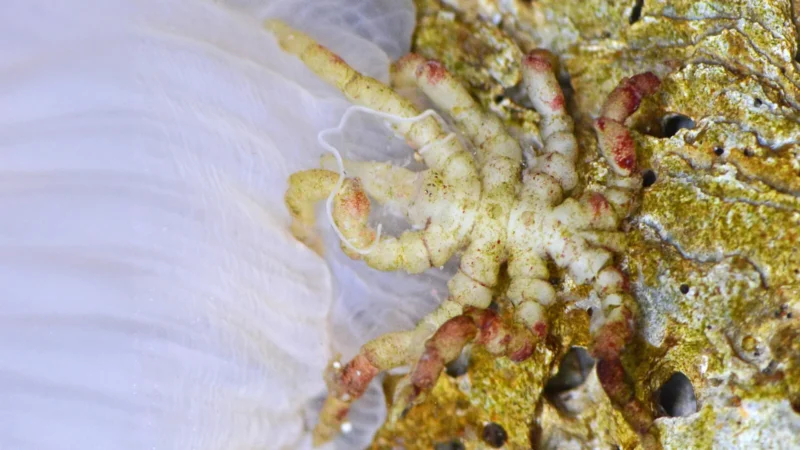Fast Facts
-
First Chromosome-Level Assembly: An international collaboration resulted in the first-ever chromosome-level genome assembly of the sea spider Pycnogonum litorale, advancing understanding of chelicerate evolutionary history.
-
Unique Anatomy Insights: The genome reveals genetic factors behind the sea spider’s unusual body plan, including the absence of key Hox genes linked to its reduced abdomen, indicating evolutionary correlations.
-
Evolutionary Patterns: Unlike its relatives, P. litorale shows no signs of ancient whole-genome duplications, suggesting these occurred later in chelicerate evolution.
- Future Research Foundation: This high-quality genome serves as a reference for future studies on gene regulation, development, and regeneration in chelicerates, enhancing our grasp of arthropod diversity.
The Genetic Puzzle of Sea Spiders
Researchers recently unveiled the genome of Pycnogonum litorale, the sea spider, shedding light on its extreme body structure. This groundbreaking study combined state-of-the-art sequencing techniques to assemble the genome with unprecedented detail. As a result, scientists revealed 57 pseudochromosomes, covering nearly the entire genetic makeup of these marine arthropods. The missing piece in this puzzle lies within the Hox gene cluster. Particularly, the absence of the abdominal-A (Abd-A) gene likely contributes to the sea spider’s drastically reduced abdomen. This intriguing loss connects to broader evolutionary patterns, showing how genetic changes shape body plans across species.
Furthermore, sea spiders stand out as they lack signs of ancient whole-genome duplications found in other chelicerates, like spiders and scorpions. This absence suggests that significant genetic changes occurred much later in their lineage. As these findings came from a collaborative effort between universities in Vienna and Wisconsin-Madison, they highlight the power of global scientific partnerships in addressing complex biological questions. With a detailed reference genome now available, researchers can explore new avenues in evolutionary biology and deepen our understanding of marine life.
Implications for Evolutionary Research
The revelations about sea spiders extend beyond mere curiosity. They open doors to understanding how lost genes influence the diversity of body plans in the animal kingdom. Sea spiders offer an excellent model for studying evolutionary development, especially given their unique characteristics and exceptional regenerative abilities. The potential for practical applications in regenerative medicine exists as scientists delve into gene activity during various developmental stages.
In light of these findings, the sea spider genome will serve as a vital reference for comparative studies across different arthropod lineages. This research not only enhances our comprehension of marine arthropods but also invites broader discussions around the evolution of life on Earth. As we explore these mysteries, we unlock the potential for further innovations in biology and medicine. Indeed, the sea spider’s bizarre, leggy anatomy may lead to breakthroughs that extend well beyond the ocean’s depths.
Stay Ahead with the Latest Tech Trends
Stay informed on the revolutionary breakthroughs in Quantum Computing research.
Discover archived knowledge and digital history on the Internet Archive.
TechV1

